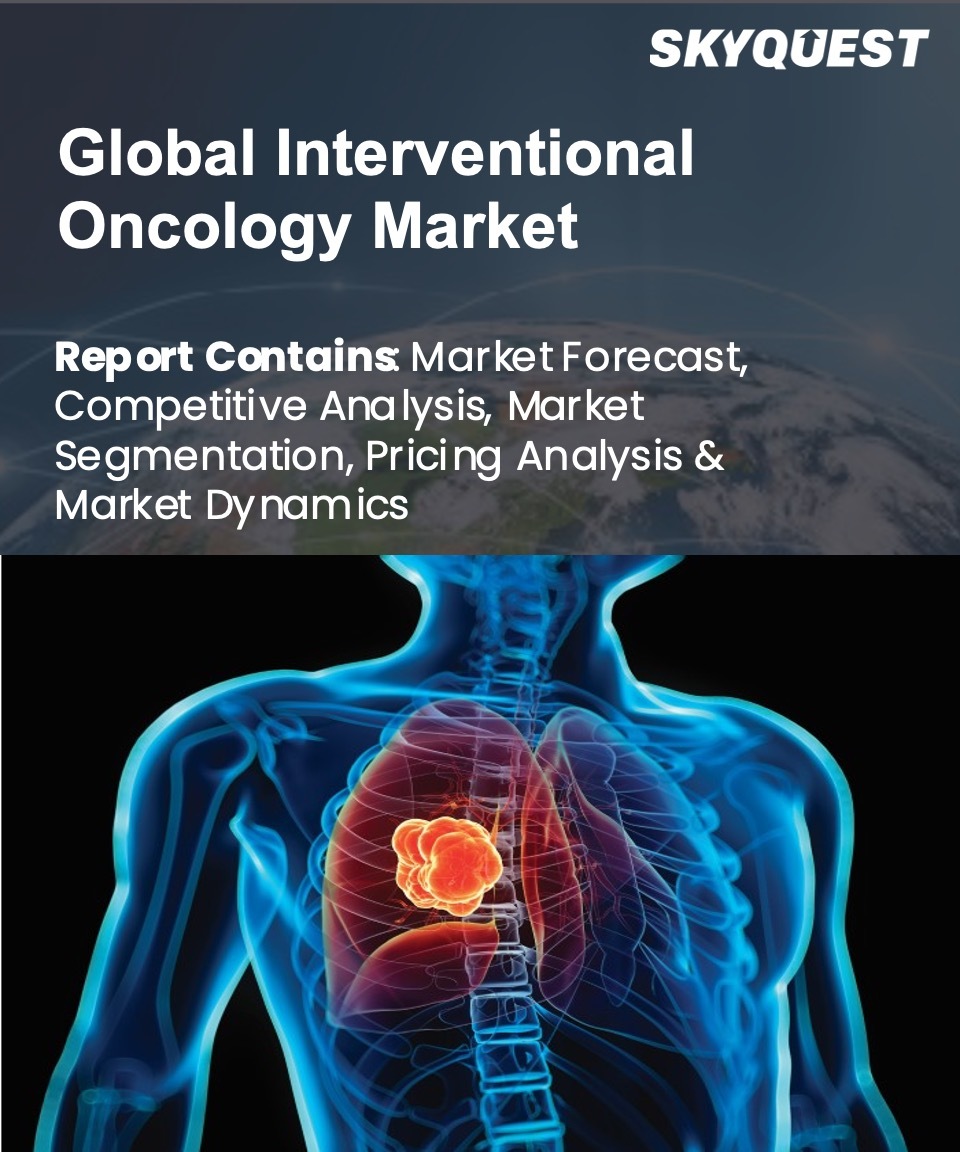
Product ID: SQMIG35G2238

Report ID:
SQMIG35G2238 |
Region:
Global |
Published Date: February, 2024
Pages:
242
|
Tables:
147 |
Figures:
78
Interventional Oncology Market Driver
Because of the numerous advantages that these techniques have over traditional treatment methods, the demand for minimally invasive treatments has increased significantly in recent years. The primary advantages of minimally invasive treatments are fewer operating problems, shorter hospitalization, less discomfort, smaller and more aesthetic incisions, a lower risk of infection, less post-surgical care, and faster recovery. In minimally invasive treatments, advanced technologies are used to detect and treat a variety of disorders, including cancer. These techniques are used to remove cancer tumors and lymph nodes while leaving no visible scars. Minimally invasive procedures also help surgeons collect tissue for biopsy and staging investigations. As a result, surgeons can develop a more precise cancer treatment strategy. Minimally invasive procedures also result in significant cost savings. Leading interventional oncology market players are increasingly emphasizing the introduction of innovative technologically sophisticated products. The innovation in this market is focused on developing cost-effective, technologically sophisticated, and easy-to-use interventional oncology technologies. These advancements aim to improve the efficiency of interventional oncology systems while also broadening their application areas, thereby increasing end-user demand for these systems.
Interventional Oncology Market Restraint
The interventional oncology industry is undergoing continual technical breakthroughs and improvements to improve the accuracy and specificity of equipment and treatments. However, interventional oncology is a method that requires full-time professionals to reach and maintain excellent standards. As a result, the interventional oncology industry is likely to suffer from a scarcity of well-trained and qualified radiologists and oncologists. In the United States, for example, a shortage of more than 2,300 medical oncologists is projected by 2025. (Source: Journal of Global Oncology). This aspect will have a greater impact on developing and impoverished regions. One of the biggest challenges in providing care for patients with treatable tumours in Sub-Saharan Africa is a paucity of medical oncologists, radiation oncologists, and other cancer-care personnel. Similarly, there is a severe scarcity of oncologists, radiotherapists, and surgical oncologists in India. Only one oncologist handles every 2,000 cancer patients in a country with 1.8 million cancer patients. Despite the availability of a large target patient population, the scarcity of oncologists and radiologists in numerous countries throughout the world is predicted to have an impact on the adoption of interventional oncology procedures in their individual healthcare systems.
Our industry expert will work with you to provide you with customized data in a short amount of time.
REQUEST FREE CUSTOMIZATIONInterventional Oncology Market size was valued at USD 1984 million in 2019 and is poised to grow from USD 2134.78 million in 2023 to USD 4127.28 million by 2031, growing at a CAGR of 7.6% in the forecast period (2024-2031).
Want to customize this report? This report can be personalized according to your needs. Our analysts and industry experts will work directly with you to understand your requirements and provide you with customized data in a short amount of time. We offer $1000 worth of FREE customization at the time of purchase.

Product ID: SQMIG35G2238